FLUTD in Cats: Symptoms, Treatment and Prevention
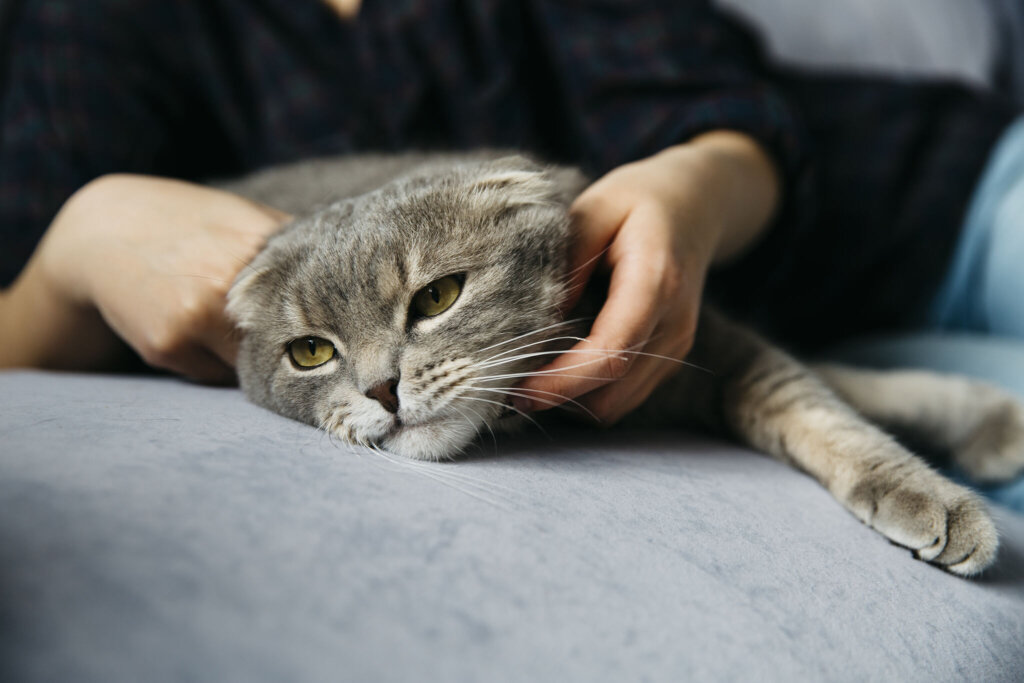
Feline lower urinary tract disease (FLUTD) is a group of pathologies that cause obstructions or inflammation of the lower urinary tract in felines. The organs that are affected are the bladder and the urethra. It occurs in cats of any age, breed, or sex, although there are certain risk factors that lead to its development.
In this article, we’ll explore the causes, symptoms, and treatment of this condition, as well as preventive measures to maintain the welfare of your feline companion. If you’re a cat lover and care about your cat’s health, this content is ideal for you. Don’t miss it!
What are the causes of FLUTD in cats?
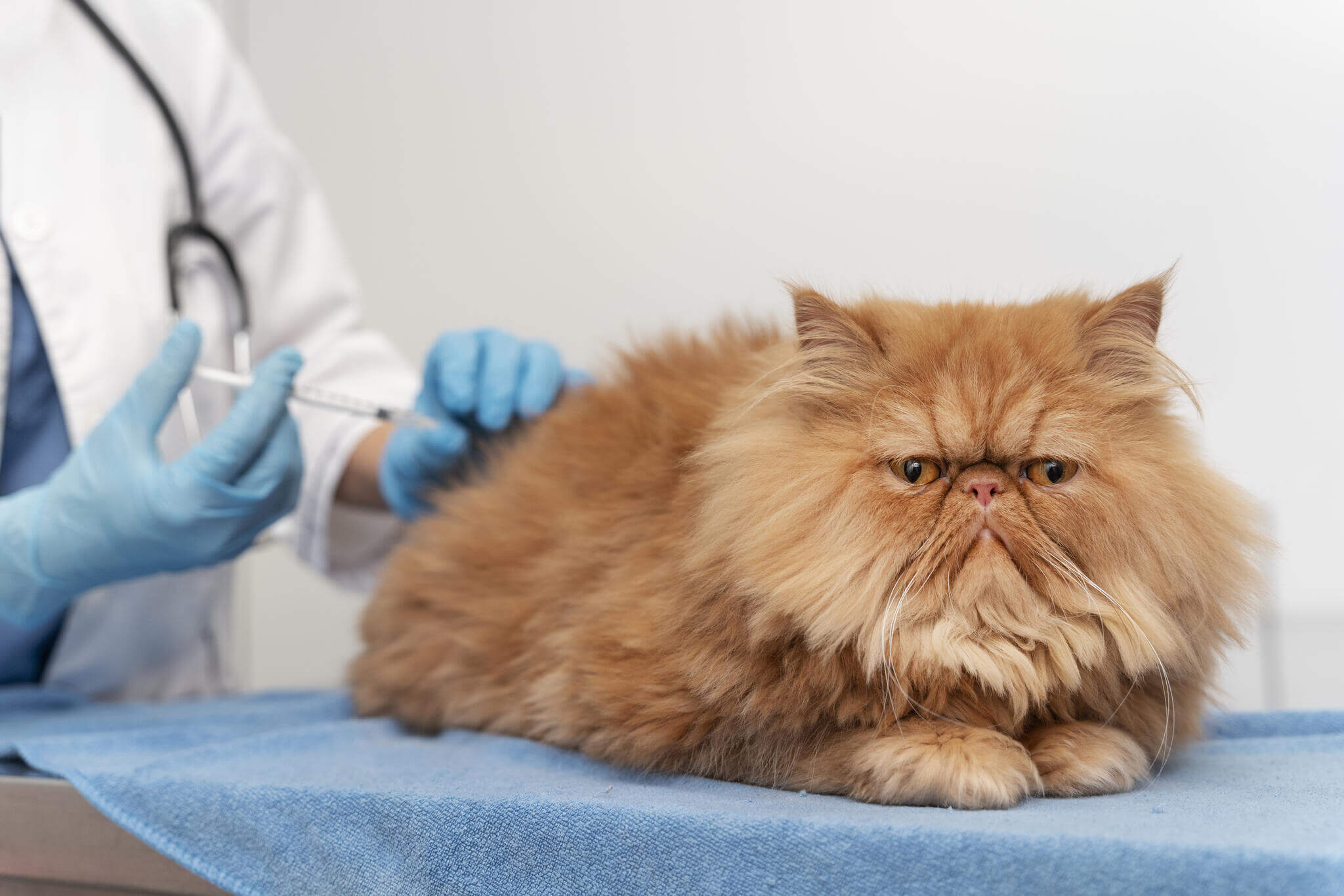
According to a study published in the Journal of the American Veterinary Medical Association, obesity, a sedentary lifestyle, low water intake, and being male are considered the main risk factors for the development of lower urinary tract disease in cats. In addition, breeds such as Persian, Manx, and Himalayan are more predisposed to suffer from it.
Its origin can be classified as obstructive and non-obstructive, depending on the pathology that creates it. According to the above, the most frequent causes of this disease are mentioned in the following lines.
Non-obstructive etiology
In these cases, there’s no mechanical opposition to the passage of urine through the urinary tract, but there’s an inflammation of the structures involved in urination.
Idiopathic cystitis
It’s the pathology most related to FLUTD in felines. In fact, according to an article in the Journal of Feline Medicine and Surgery, it represents 65% of all cases affecting the lower urinary tract in cats. It’s characterized by an unknown origin, although alterations in the nervous innervation of the bladder are presumed to be the cause.
This is stated by the authors of the study Feline Idiopathic Cystitis. They argue that in stressful situations, the sympathetic nervous system releases an increased amount of norepinephrine and other catecholamines. This leads to a neurogenic inflammation of the bladder, an increase in bladder contraction, and an alteration of glycosaminoglycans, which make up the protective layer of this organ.
Likewise, when this barrier experiences changes, the permeability of the bladder wall increases, so that the toxins present in the urine produce greater inflammation or cystitis.
Urinary tract infections (UTI)
Colonization of the lower urinary tract by microbial agents generates inflammation. According to a study by researchers Dorsch, Teichmann-Knorrn and Sjetne Lund, bacteria are the main cause of infections, while less than 1% are caused by parasites, fungi, or viruses.
The main organism isolated in UTIs is Escherichia coli, although Streptococcus, Enterococcus, Staphylococcus, and some morbilliviruses have also been reported.
Tumors
The most common bladder tumor in felines is transitional cell carcinoma. This neoplasm invades the musculature of the bladder walls and consequently alters its correct functionality. Although it’s an uncommon pathology, it should be closely monitored due to its capacity to metastasize to other organs.
Obstructive etiology
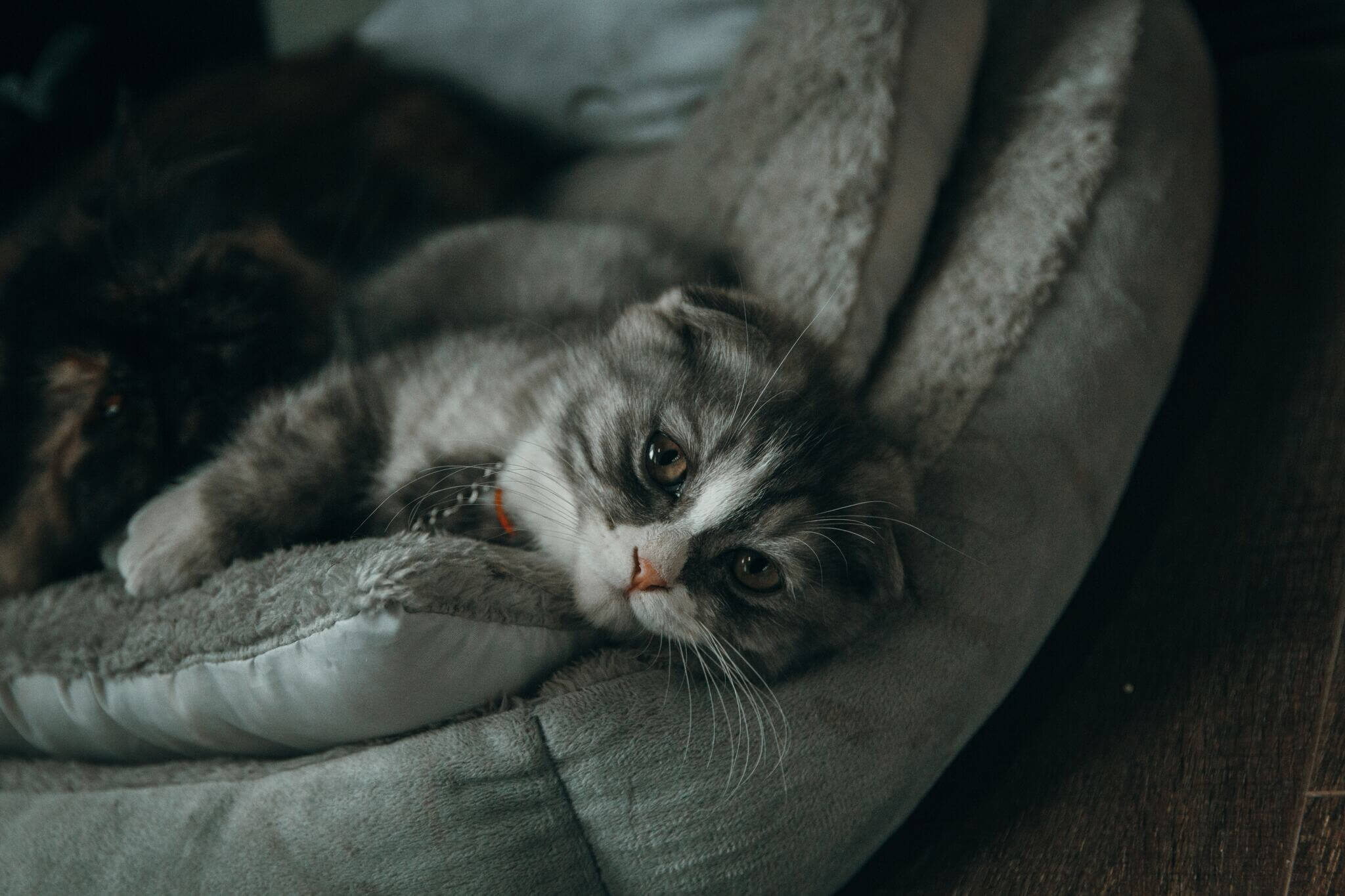
As the name implies, a solid material impedes the normal outward flow of urine. Blockages can be total or partial and can appear suddenly or over several weeks.
Uroliths
Bladder stones – as they’re also known – are the second leading cause of FLUTD in cats. They originate from the accumulation and crystallization of minerals in the bladder. Between 80 to 90% are formed by calcium oxalate and struvite (magnesium and ammonium phosphate hexahydrate).
In fact, they can cause a clogging of both the bladder trigone (structure through which the bladder empties) and the urethra in any of its portions. This causes alterations in the flow of urine and accumulation of urine in the bladder.
Urethral plugs
Unlike uroliths, urethral plugs are composed of a combination of organic matrix (cells and proteins) and, in some cases, crystallized material. They occur as a consequence of bladder inflammation or due to infections, neoplasms, and stones.
They may cause partial or total obstruction of the urethra, which is the tube through which urine passes from the bladder to the outside during urination.
What are the symptoms?
The illnesses related to lower urinary tract disease in cats prevent the correct elimination of waste out of the body. In addition, they produce inflammatory and obstructive conditions. In this sense, the symptoms that your cat may suffer from are the following:
- Difficulty and pain when urinating
- Blood in the urine
- Frequent urination, but in small quantities
- Incontinence
- Meowing and whining when urinating
- Urination out of the sandbox and in places where he didn’t urinate before
- Excessive licking of the abdomen and perineal area
- Decay
- Vomiting
- Anorexia and weight loss
- Behavioral changes, such as aggressive behavior
What to do if your cat has FLUTD?
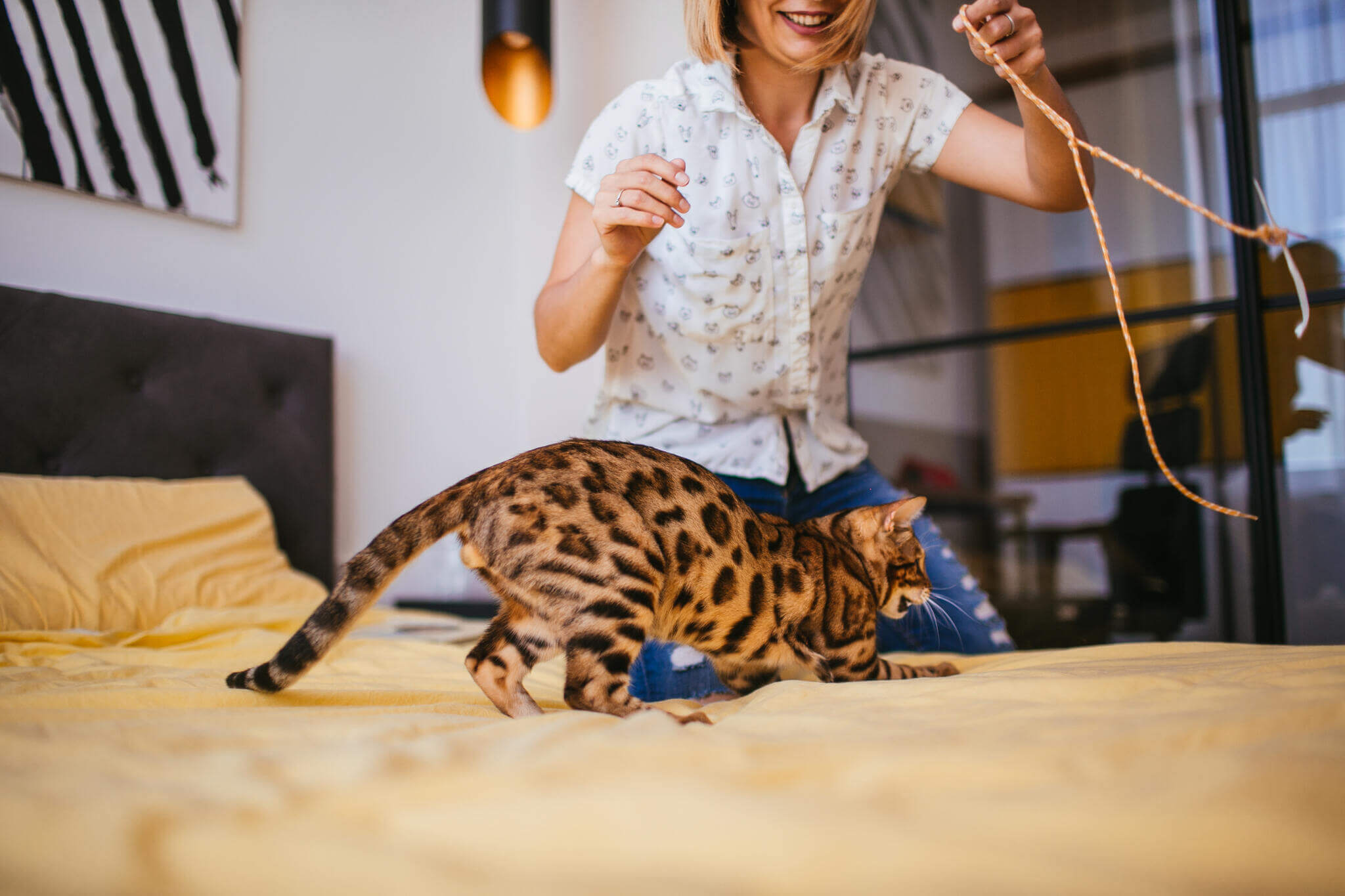
Because of all the dynamics involved in the pathophysiology of FLUTD, medical and nutritional treatment can be distinguished in its management.
Clinical therapy
Before starting treatment, the veterinarian should evaluate your pet’s condition and determine whether it’s an obstructive or non-obstructive FLUTD. After this, you’ll need to take action to restore the normal flow of urine through the urinary tract.
Firstly, according to the article Evidence-based management of feline lower urinary tract disease. In all feline cases of acute FLUTD, the use of anti-inflammatory and analgesic medications should be considered to alleviate the discomfort caused by inflammation and/or obstruction.
In addition, according to a publication in Today’s Veterinary Practice Journal, it’s advisable to provide spasmolytic drugs that relax the muscles of the urethra, to promote urination and antibiotics, if there’s an infection.
On a more specific level, if it’s due to idiopathic cystitis, the goal should be to reduce stress levels, which are causing this pathology in your cat. This can be achieved through the modification and enrichment of the environment your pet lives in.
In this sense, the recommendation is to include games, scratching posts, plants, or other objects capable of stimulating the senses and entertaining your feline companion at home. Even the use of pheromones and other scents has proven to be beneficial to reduce stress and anxiety levels in cats.
On the other hand, in case of a possible obstruction due to urethral plugs, it’ll be necessary to combine medical treatment with the installation of a urinary catheter. This is because plugs tend to form easily, so the bladder and urethra need to have the way clear to discharge when they need to.
Finally, surgical procedures such as cystotomy and urethrostomy are recommended for the management of uroliths, which, due to their size or composition, can’t be eliminated by diet.
Nutritional therapy
Nutritional therapy seeks to modify the composition of the urine (to avoid the accumulation of certain minerals) as well as to dissolve those crystals in formation. On the one hand, according to the publication Nutrition and Lower Urinary Tract Disease in Cats, struvite calculi require acidifying diets that maintain the urinary pH between 6 and 6.5. In addition, it’s required that they contain low levels of magnesium and phosphorus in their formulation.
Similarly, concentrated foods with good levels of salt are recommended, because this element allows the production of a more diluted urine and therefore a lower saturation of struvite in it.
On the other hand, calcium oxalate stones are more difficult to solve by modifying the diet. Therefore, surgical intervention is required to remove stones formed in the bladder or urethra.
Other elements that are considered important for the nutritional treatment of FLUTD are the following:
- Increasing water intake to dilute the harmful components in the urine and promote their elimination.
- Increasing the consumption of moist foods to ensure that the urine is diluted.
What measures can be taken for prevention?
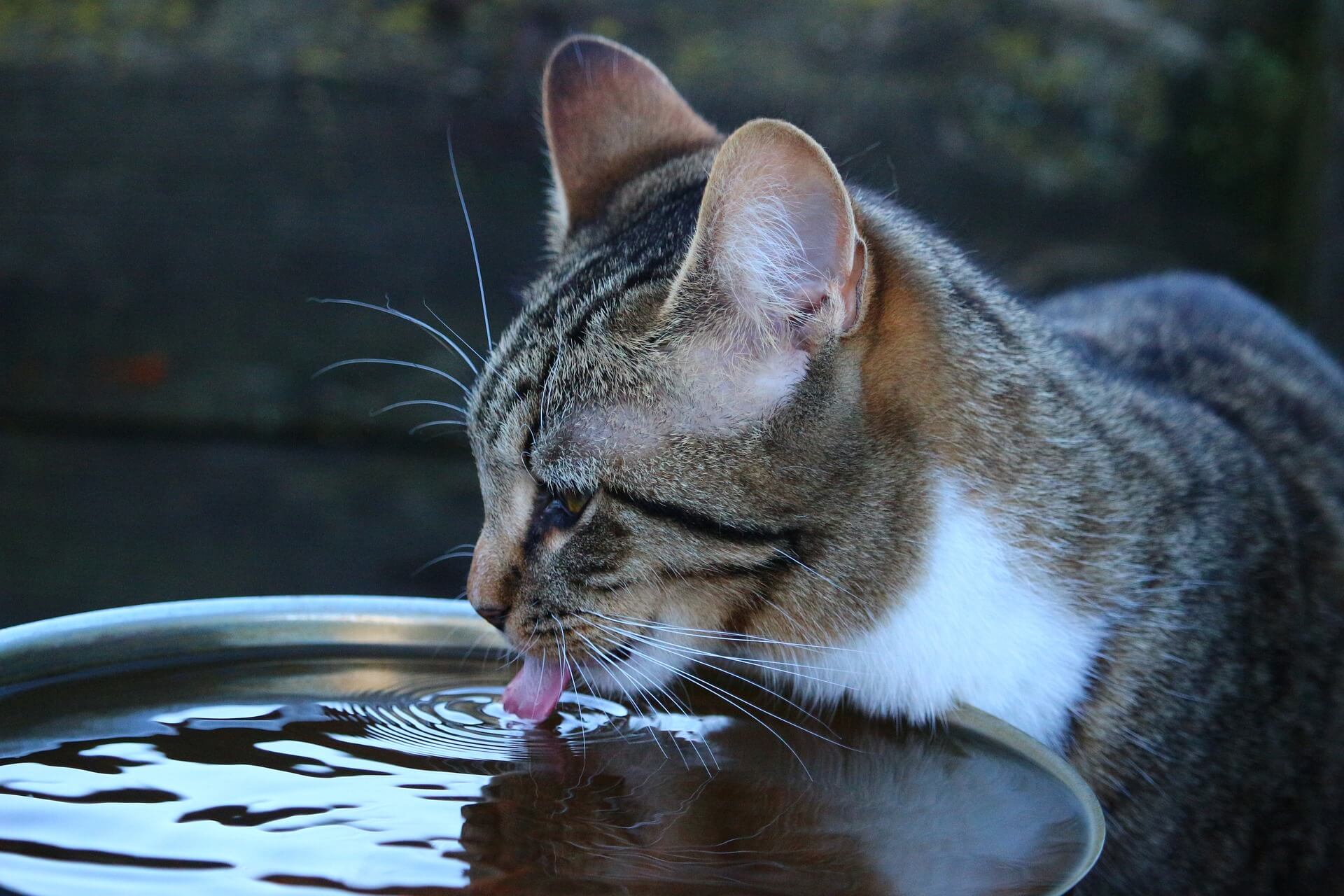
As you can see, there are many elements involved in the development of FLUTD in felines. However, with certain preventive measures, you can decrease the likelihood of this disease affecting your pets.
Avoid stress
A publication in the Journal of Veterinary Internal Medicine suggests that certain situations – such as a change of home, the addition of a new pet, or changing the places where they’re used to eating and going to the toilet – all increase anxiety states.
Therefore, you must manage this type of event correctly so that their well-being isn’t affected. Likewise, as mentioned above, sensory stimulation and the use of pheromones can help you keep your cat calm.
A balanced diet
A quality diet and good water intake will greatly reduce the occurrence of FLUTD. Using strategies, such as providing several water bowls throughout the home or giving wet food, can ensure that your cat consumes enough water. This is important to prevent calcium oxalate stones.
Control overweight
Being a risk factor, obesity should be strictly controlled. To do this, it’s necessary to seek professional advice about this condition and take preventive measures, such as exercise and low consumption of high-calorie foods.
Medications
It’s estimated that about 50% of FLUTD cases have recurrences, that is, they reappear once they have been overcome. If this is the case with your cat, some medicines can help in these situations.
According to the document mentioned above, Evidence-based management of feline lower urinary tract disease, the use of glycosaminoglycans such as chondroitin sulfate and glucosamine, for 3 to 6 months, helps the repair of the protective layer of the bladder and decreases its inflammation. The use of antidepressants such as amitriptyline is also reported to reduce neurogenic bladder inflammation and control stress in felines.
Prevention is the key
Now that you know all about FLUTD in felines, it’s your duty to prevent your pet from developing FLUTD. It’s important that you include all the strategies mentioned above, because it’s always better to be safe than sorry.
All cited sources were thoroughly reviewed by our team to ensure their quality, reliability, currency, and validity. The bibliography of this article was considered reliable and of academic or scientific accuracy.
- Bartges, J. W., & Callens, A. J. (2015). Urolithiasis. The Veterinary clinics of North America. Small animal practice, 45(4), 747–76. https://www.sciencedirect.com/science/article/abs/pii/S0195561615000467?via%3Dihub
- Bartges, J. W., & Kirk, C. A. (2006). Nutrition and lower urinary tract disease in cats. The Veterinary clinics of North America. Small animal practice, 36(6), 1361–viii. https://www.sciencedirect.com/science/article/abs/pii/S0195561606000970?via%3Dihub
- Buffington C. A. (2011). Idiopathic cystitis in domestic cats–beyond the lower urinary tract. Journal of Veterinary Internal Medicine, 25(4), 784–796. https://www.ncbi.nlm.nih.gov/pmc/articles/PMC3760680/
- Buffington, C. A., Westropp, J. L., Chew, D. J., & Bolus, R. R. (2006). Clinical evaluation of multimodal environmental modification (MEMO) in the management of cats with idiopathic cystitis. Journal of Feline Medicine and Surgery, 8(4), 261–268. https://journals.sagepub.com/doi/10.1016/j.jfms.2006.02.002?url_ver=Z39.88-2003&rfr_id=ori:rid:crossref.org&rfr_dat=cr_pub%20%200pubmed
- Busch, J., Heilmann, R. M., Vahlenkamp, T. W., & Sieg, M. (2021). Seroprevalence of Infection with Feline Morbilliviruses Is Associated with FLUTD and Increased Blood Creatinine Concentrations in Domestic Cats. Viruses, 13(4), 578. https://www.ncbi.nlm.nih.gov/pmc/articles/PMC8065871/
- Dorsch, R., Teichmann-Knorrn, S., & Sjetne Lund, H. (2019). Urinary tract infection and subclinical bacteriuria in cats: A clinical update. Journal of feline medicine and surgery, 21(11), 1023–1038. https://pubmed.ncbi.nlm.nih.gov/31601143/
- Dru Forrester, S., & Roudebush, P. (2007). Evidence-based management of feline lower urinary tract disease. The Veterinary Clinics of North America. Small Animal Practice, 37(3), 533–558. https://www.sciencedirect.com/science/article/abs/pii/S0195561607000101?via%3Dihub
- Forrester, S. D., & Towell, T. L. (2015). Feline idiopathic cystitis. The Veterinary clinics of North America. Small Animal Practice, 45(4), 783–806. https://www.sciencedirect.com/science/article/abs/pii/S0195561615000297?via%3Dihub
- George, M.C., & Grauer, F.G. (17 de junio de 2016). Feline Urethral Obstruction: Diagnosis and management. Today’s Veterinary Practice. Consultado el 31 de mayo de 2023. https://todaysveterinarypractice.com/urology-renal-medicine/feline-urethral-obstruction-diagnosis-management/
- Griffin, M. A., Culp, W. T. N., Giuffrida, M. A., Ellis, P., Tuohy, J., Perry, J. A., Gedney, A., Lux, C. N., Milovancev, M., Wallace, M. L., Hash, J., Mathews, K., Liptak, J. M., Selmic, L. E., Singh, A., Palm, C. A., Balsa, I. M., Mayhew, P. D., Steffey, M. A., Rebhun, R. B., & Kent, M. S. (2020). Lower urinary tract transitional cell carcinoma in cats: Clinical findings, treatments, and outcomes in 118 cases. Journal of Veterinary Internal Medicine, 34(1), 274–282. https://onlinelibrary.wiley.com/doi/full/10.1111/jvim.15656
- Gunn-Moore D. (2003). Feline lower urinary tract disease. Journal of Feline Medicine and Surgery, 5(2), 133–138. https://journals.sagepub.com/doi/10.1016/S1098-612X(02)00129-8?url_ver=Z39.88-2003&rfr_id=ori:rid:crossref.org&rfr_dat=cr_pub%20%200pubmed
- Kaul, E., Hartmann, K., Reese, S., & Dorsch, R. (2020). Recurrence rate and long-term course of cats with feline lower urinary tract disease. Journal of Feline Medicine and Surgery, 22(6), 544–556. https://www.ncbi.nlm.nih.gov/pmc/articles/PMC7252222/
- Lekcharoensuk, C., Osborne, C. A., & Lulich, J. P. (2001). Epidemiologic study of risk factors for lower urinary tract diseases in cats. Journal of the American Veterinary Medical Association, 218(9), 1429–1435. https://avmajournals.avma.org/view/journals/javma/218/9/javma.2001.218.1429.xml
- Sævik, B. K., Trangerud, C., Ottesen, N., Sørum, H., & Eggertsdóttir, A. V. (2011). Causes of lower urinary tract disease in Norwegian cats. Journal of Feline Medicine and Surgery, 13(6), 410–417. https://journals.sagepub.com/doi/10.1016/j.jfms.2010.12.012?url_ver=Z39.88-2003&rfr_id=ori:rid:crossref.org&rfr_dat=cr_pub%20%200pubmed
- Westropp, J. L., Delgado, M., & Buffington, C. A. T. (2019). Chronic Lower Urinary Tract Signs in Cats: Current Understanding of Pathophysiology and Management. The Veterinary Clinics of North America. Small Animal Practice, 49(2), 187–209. https://www.sciencedirect.com/science/article/abs/pii/S0195561618301359?via%3Dihub
